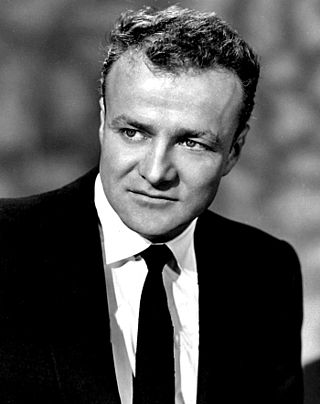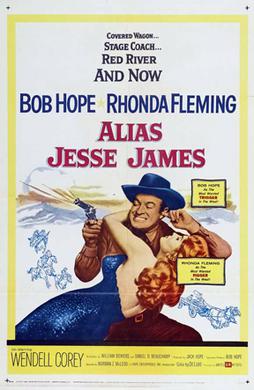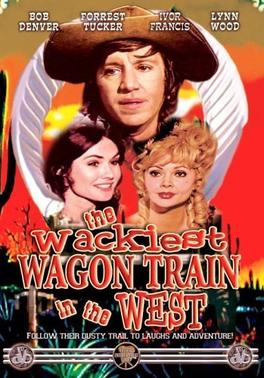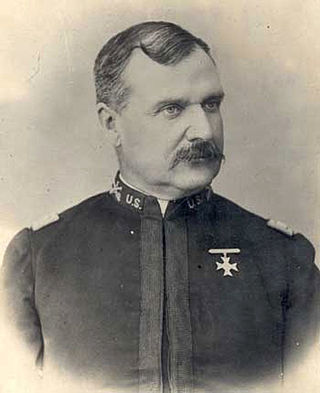
Robert Osbourne Denver was an American comedic actor who portrayed beatnik Maynard G. Krebs on the 1959–1963 series The Many Loves of Dobie Gillis and Gilligan on the 1964–1967 television series Gilligan's Island.

Lee Ann Remick was an American actress and singer. She was nominated for the Academy Award for Best Actress for the film Days of Wine and Roses (1962) and was nominated for the Tony Award for Best Actress in a Play for her role in Wait Until Dark (1966). She also earned seven Emmy Award nominations.

Robert Alba Keith, known professionally as Brian Keith, was an American film, television, and stage actor who in his six-decade career gained recognition for his work in films such as the Disney family film The Parent Trap (1961); Johnny Shiloh (1963); the comedy The Russians Are Coming, the Russians Are Coming (1966); and the adventure saga The Wind and the Lion (1975), in which he portrayed President Theodore Roosevelt.

The Prince Edward Theatre is a West End theatre situated on Old Compton Street, just north of Leicester Square, in the City of Westminster, London.

The Powder River Expedition of 1865 also known as the Powder River War or Powder River Invasion, was a large and far-flung military operation of the United States Army against the Lakota Sioux, Cheyenne, and Arapaho Indians in Montana Territory and Dakota Territory. Although soldiers destroyed one Arapaho village and established Fort Connor to protect gold miners on the Bozeman Trail, the expedition is considered a failure because it failed to defeat or intimidate the Indians.

John Eliot Sturges was an American film director. His films include Bad Day at Black Rock (1955), Gunfight at the O.K. Corral (1957), The Magnificent Seven (1960), The Great Escape (1963), and Ice Station Zebra (1968). In 2013 and 2018, respectively, The Magnificent Seven and Bad Day at Black Rock were selected for preservation in the United States National Film Registry by the Library of Congress as being "culturally, historically, or aesthetically significant".

Benjamin Franklin "Frank" McGrath was an American television and film actor and stunt performer who played the comical, optimistic cook with the white beard, Charlie B. Wooster, on the western series Wagon Train for five seasons on NBC and then three seasons on ABC. McGrath appeared in all 272 episodes in the eight seasons of the series, which had ended its run only two years before his death. McGrath's Wooster character hence provided the meals and companionship for both fictional trail masters, Ward Bond as Seth Adams and John McIntire as Christopher "Chris" Hale.

Gloria Maude Talbott was an American film and television actress.

Dusty's Trail is an American Western/comedy series starring Bob Denver and Forrest Tucker that aired in syndication from September 1973 to March 1974. The series is a western-themed reworking of Denver's previous series Gilligan's Island.

Alias Jesse James is a 1959 American Western comedy film directed by Norman Z. McLeod and starring Bob Hope and Rhonda Fleming. Based on a story by Robert St. Aubrey and Bert Lawrence, the film is about an outlaw who tries to kill an insurance agent who has been mistaken for him in order to collect on a big policy. Costumes by Edith Head.

Wagons East is a 1994 American Western adventure comedy film directed by Peter Markle, written by Matthew Carlson, and starring John Candy, Richard Lewis, John C. McGinley, Ellen Greene, Robert Picardo, Rodney A. Grant, and Ed Lauter. It tells the story of an alcoholic wagon master who leads a group of misfit settlers in the Wild West back to the East. The film was released in the United States on August 26, 1994. Filming took place in Sierra de Órganos National Park in the town of Sombrerete, Mexico, and in Durango, Mexico.

Custer of the West is a 1967 American epic Western film directed by Robert Siodmak that presents a highly fictionalised version of the life and death of George Armstrong Custer, starring Robert Shaw as Custer, Robert Ryan, Ty Hardin, Jeffrey Hunter, and Mary Ure. It is the first film production from Cinerama Releasing Corporation. The film was shot entirely in Spain.

The Indian Fighter is a 1955 American CinemaScope and Technicolor Western film directed by Andre de Toth and based on an original story by Robert L. Richards. The film is the first of star Kirk Douglas's Bryna Productions that was released through United Artists. The film co-stars Elsa Martinelli, Walter Matthau, Kirk Douglas's ex-wife Diana Douglas and Walter Abel.

The Walking Hills is a 1949 American Western film directed by John Sturges and starring Randolph Scott and Ella Raines. The film's plot has film noir elements in its story of a search for an old treasure by nine men including a detective tracking a fugitive, several others who have things to hide, and a love triangle involving the two leads and the fugitive.

The Wackiest Wagon Train in the West is a 1976 American Western comedy film directed by Jack Arnold. The film stars Bob Denver as Dusty, the bumbling assistant to Wagonmaster Callahan featured in the syndicated series Dusty's Trail.

Pillars of the Sky is a 1956 American CinemaScope Western film directed by George Marshall and starring Jeff Chandler, Dorothy Malone and Ward Bond. It was produced and distributed by Universal Pictures.

The Oregon Trail is a 1959 American CinemaScope and DeLuxe Color Western film directed by Gene Fowler Jr. and starring Fred MacMurray, William Bishop and Nina Shipman.

Fort Wicked was a ranch and stage station on the Overland Trail from 1864 to 1868 in present-day Merino, Colorado. A historical marker commemorating the ranch is located at US 6 and CR-2.5. The ranch itself was located near a ford of the South Platte River, near where US-6 now crosses over the river. Fort Wicked was one of the few places along the trail to Denver that withstood an attack by Lakota (Souix), Cheyenne, and Arapaho Native Americans (Indians) in the Colorado War of 1864. It was named Fort Wicked for the "bitter defence" made by Holon Godfrey, his family, and his employees.

Homer W. Wheeler was an American military officer and author. A veteran of the American Indian Wars and Spanish–American War, he attained the rank of colonel and wrote several books, including memoirs of his experiences on the western frontier of the United States in the late 1800s.



















